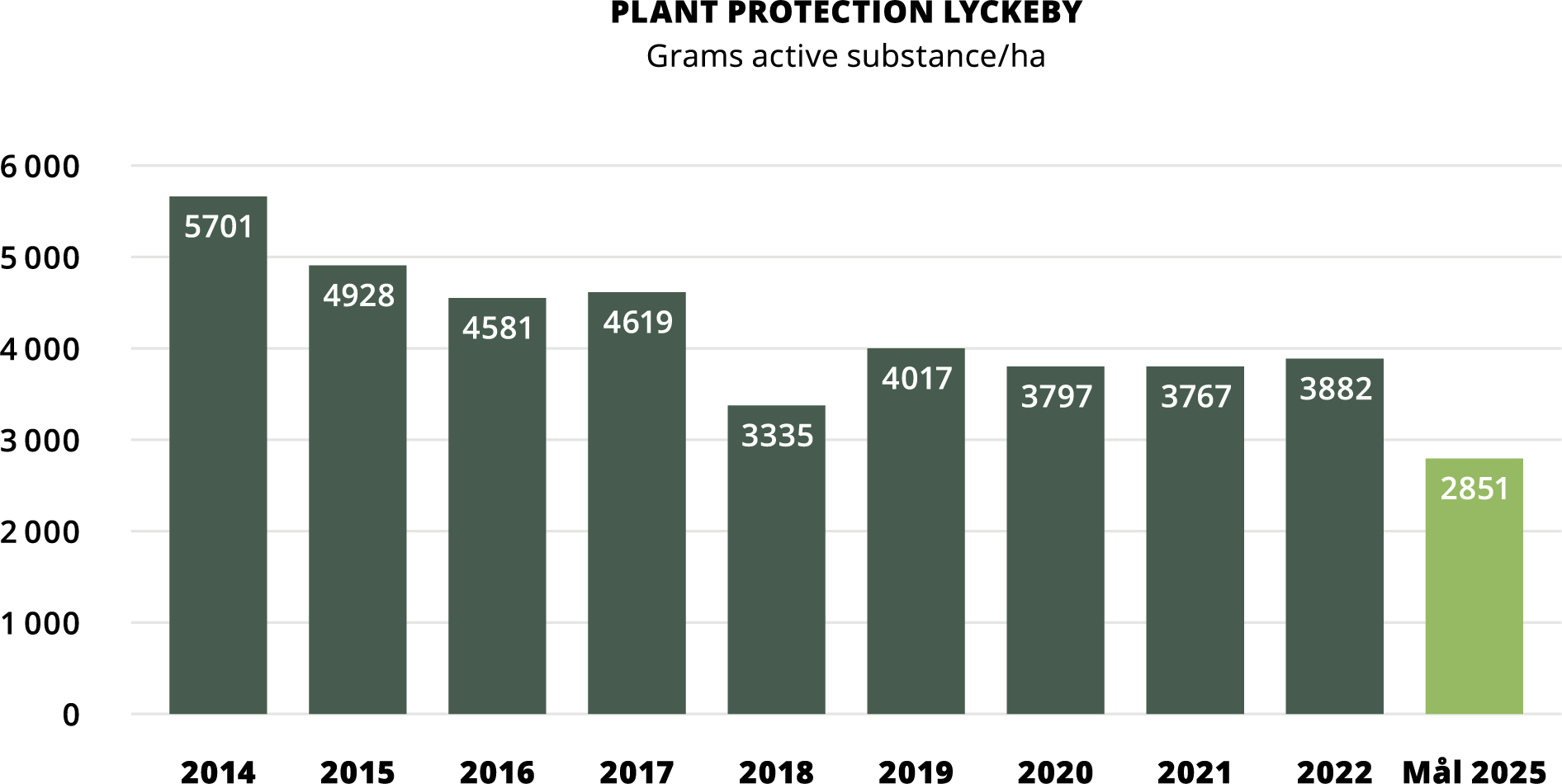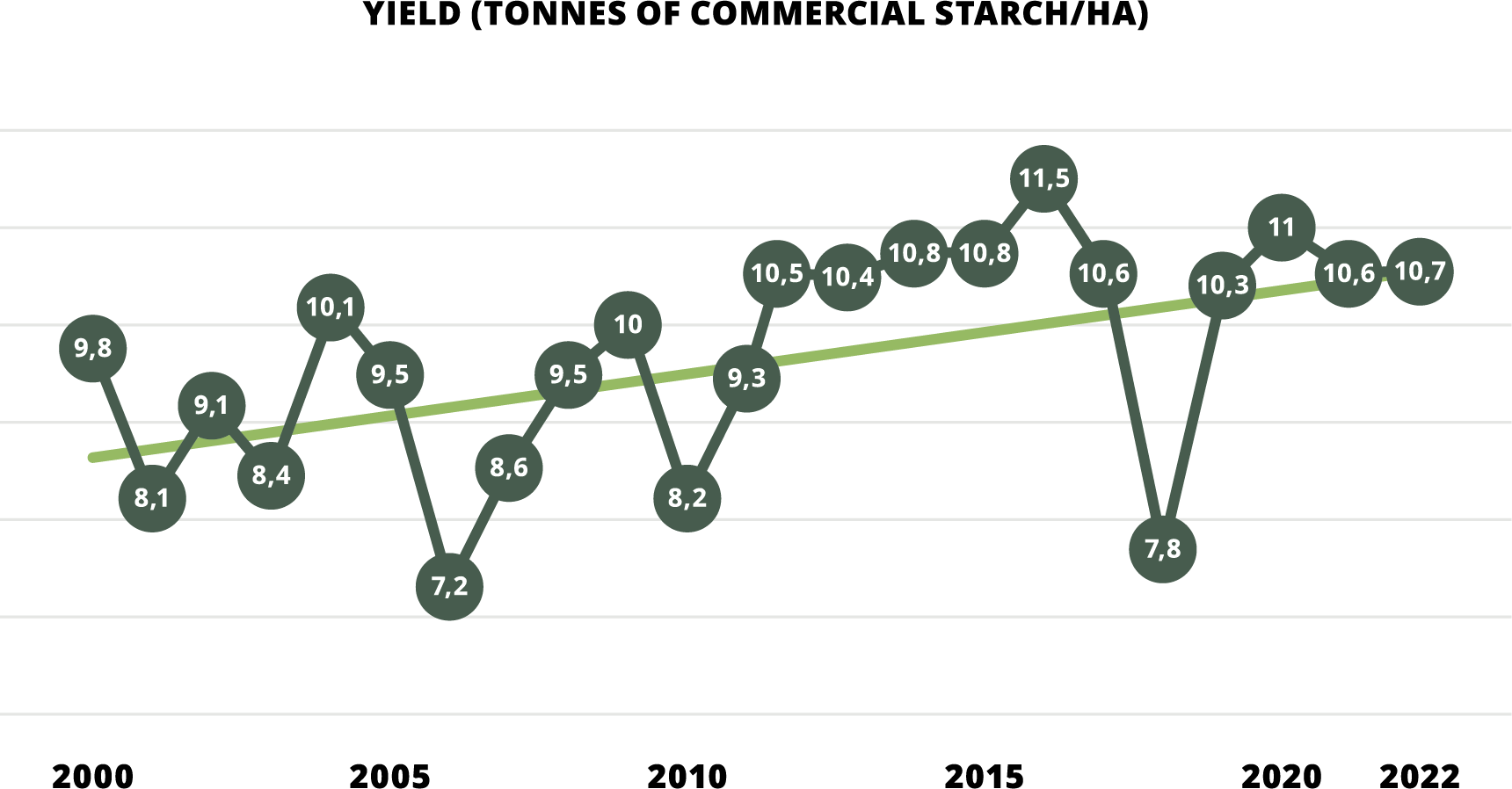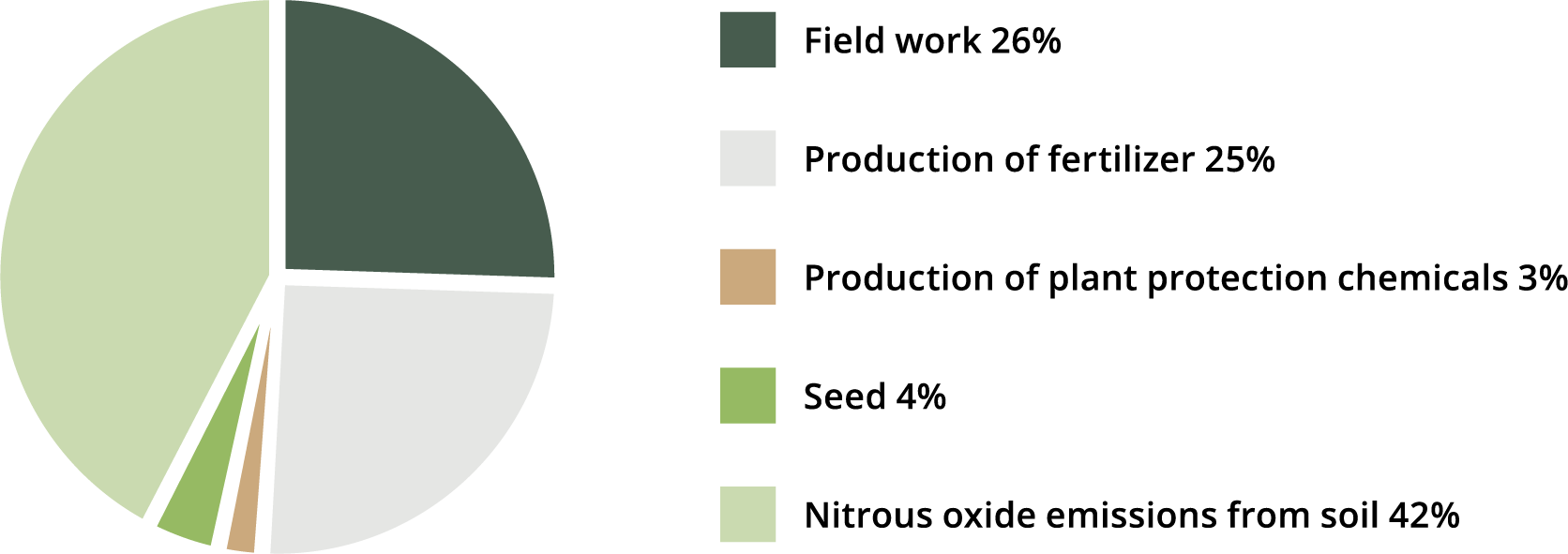Environmentally sustainable cultivation of starch potatoes
Naturally, our starch operations also follow up on supplier social responsibility, and our Code of Conduct applies to all suppliers. But our sustainability focus for cultivation in Sweden is primarily the environmental challenges, as we consider these to be greater than the social issues.
A close collaboration for a higher harvest and fewer plant protection products
We have a very good and close relationship with our suppliers, not least because a majority of them are partners in our business. Together, we work to achieve higher harvests, a lower carbon footprint, and low use of plant protection products. The incentive here is both environmental and economic.
For our Swedish growers, increasing harvests is a good indicator of success. And the harvest is also important for our carbon footprint, as a large part of it comes from nitrous oxide emissions. The more land we use for our cultivation, the higher the carbon footprint.
Plant protection products are used in cultivation of starch potatoes to combat weeds and illnesses that attack the plant – above all blight and the Alternaria fungus. Research conducted in this area, together with our own cultivation trials, has shown that the quantity of protection products can often be reduced with little or no impact on the yield.
On the basis of this, Lyckeby in Sweden now have a target of reducing the quantity of plant protection products used by our potato suppliers by half per hectare by 2025 compared to the quantity used in 2014. To date, the figure has reduced by 30%. To ensure that we reach our goal, we provide advice to our potato growers through weekly mailings during the cultivation season containing recommended dosages for plant protection products. The recommendations are based on existing forecasting models for blight and Alternaria. The major reduction between 2014 and 2018 was achieved using a tool for forecasting fungal attacks.
Knowledge-based improvement
We work intensively to develop new forecasting models, including through cultivation trials where we evaluate the effects of plant protection products in different cultivation conditions. Insect traps around the Swedish cultivation area are investigated every week and provide us with useful information. Our growers come together at our field meets, where they share information and experience with each other and with us. For example, very small amounts of protection products are required in dry conditions, as the risk of blight is very low. The program to reduce the use of plant protection products is aimed at reducing the impact of farming on biodiversity. Reducing the use of plant protection products by 50% aligns well with “Farm to Fork”, where the goal is for the quantity of plant protection products used within the EU to be halved by 2030.
Flowering fields
Rationalization of the cultivated landscape has created problems for wild animals and plants, including insects being affected by the lack of flowers in the landscape. Potatoes are one of the few flowering crops in a normal crop rotation, and when the rapeseed has flowered, potatoes offer food for insects such as bumblebees. As well as our raw material providing insect food, for several years we have sponsored the Hela Sverige Blommar [The Whole of Sweden Flowers] project, which finances flowering field margins around Sweden.
The good and bad of water
Potatoes are a crop that enjoy a little extra water when summers are dry. Many of our Swedish growers water their potatoes, while very few of our Czech suppliers have the opportunity to do so – something that’s visible in the harvests. We think this will become an increasingly important issue when the effects of climate change become more obvious. Both in terms of dealing with precipitation and arranging for watering in dry conditions. This is something we take into account when we develop new potato varieties and in our cultivation development, where we address issues such as the time of year and day it’s most effective to water crops.
Martin Andersson
Climate impact of potato cultivation
Potato cultivation represents approximately 40% of Lyckeby’s carbon footprint, when we include our direct emissions of greenhouse gases from production and indirect emissions from elements such as raw materials, packaging, and transports. Almost half of the emissions take the form of nitrous oxide from the cultivated areas, and it is difficult to affect this. Other emissions are caused above all during production of mineral fertilizer and through the use of fuels during cultivation.
The climate impact calculation indicates which activities we need to prioritize in the future to reduce our total carbon footprint in accordance with our goal to reduce emissions in Scope 3 by 20% between 2017 and 2025. You can read more about this on Page 55. We are currently reviewing how the carbon footprint from cultivation should be calculated, which may change the figures in the future to some extent. But we already know where we need to make an effort. In the past year, we have mapped our growers’ use of fuel and fertilizer, and discovered that 38% of our growers use diesel with an admixture of bio-diesel, while fertilizers with a better climate performance (Best Available Technology fertilizer (BAT)) is used on 40% of the cultivation area.






